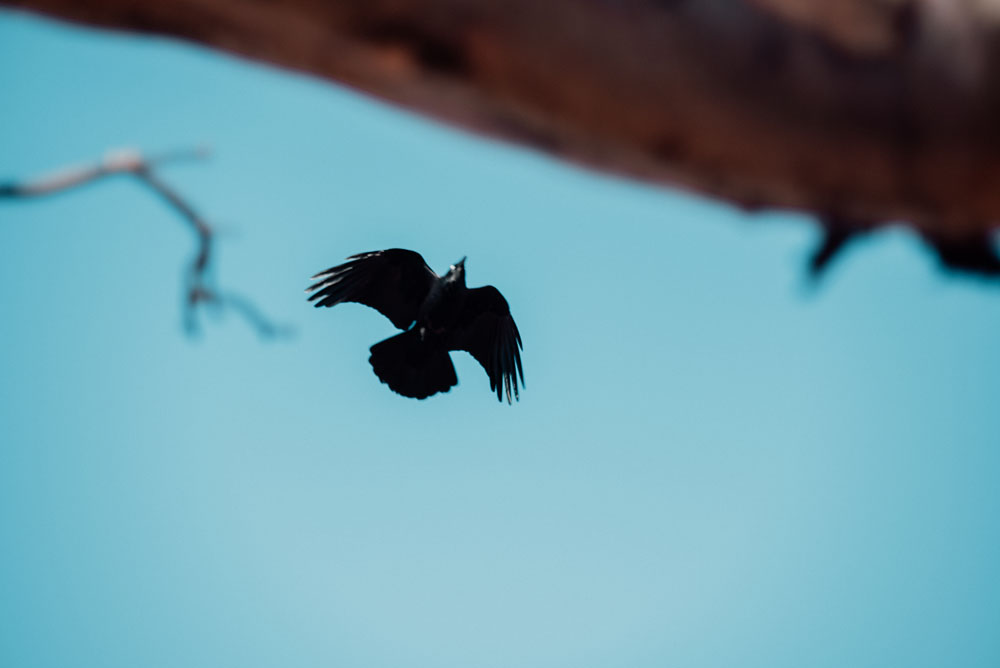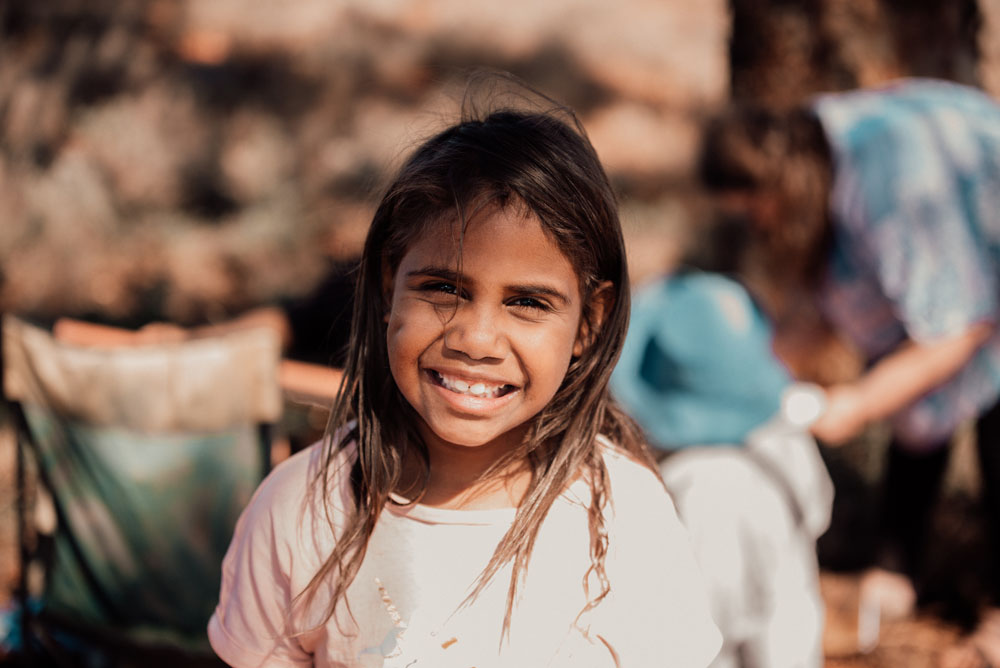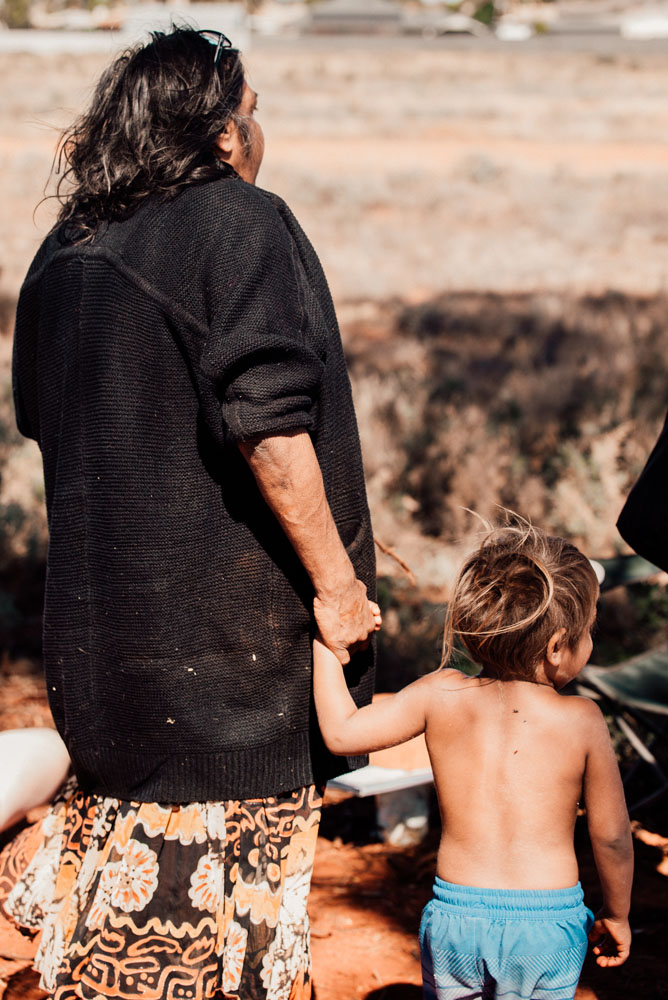CULTURAL WARNING: Aboriginal and Torres Strait Islander readers are advised that the following story contains names of people who have died.
”We weren’t created to work on our own. We need each other on our journey. And on our journey, different people come to the table, and no one’s boss” says Kgukgi Catherine Noble Howard.
Kgukgi Catherine Noble Howard is a Wongutha and Ngaanyatjarra artist based in Kalgoorlie, Western Australia. We were lucky to meet with Kgukgi, where she shared her unique perspective on the cycle of life, the interconnectedness of all living things, and the importance of listening in to the world around us.



Image credit: Kgukgi Catherine Noble Howard. All photography in this story by Mellen Burns.
At a clearing nearby her home, we sat under the shade of a large gumtree as her grandchildren played around us. Kgukgi held a glass jar containing seeds from the karlkurla, or ‘silky pear,’ the traditional bush food that Kalgoorlie is named after.
“The karlkurla has a green pear shape with a little line in the middle, so you can cut it with your fingernail, open it up. Then you’ve got a fleshy white pip, which has the silk. And each strand has one seed, a bit like an alfalfa seed” she shared. “It’s lovely and juicy. But if you eat too much, it can sting your mouth. Sort of like nature’s telling you you’ve had enough.”
The karlkurla is symbolic of the cycle of life and death, Kgukgi explained. “It has one seed on it, and when the silk dries up, it’s like the dandelion. A nice little wind will take it to wherever its next home is. It flies away with that seed and goes to replant somewhere else” she said. “For new life, it has to go through that process, and then it starts on another cycle. Things must die before they can be useful and bring to life new meaning.”
Bush foods and animals recur in Kgukgi’s paintings, conveying messages around sharing, healing, and symbiosis. “There’s all these different shapes, but different shapes put together build a good picture” Kgukgi said. “I put half a goanna here, his head over there, and his tail over here. And that goanna, him and the snake can live together, and they won’t fight and carry on. But with the snake in one place, and the goanna in another place, everything’s broken. That’s how life is. Until you get to this good business of working together. Like the Seven Sisters, they all work together. And when you eat good food, you move away from this brokenness. Eat that, mend this, and then you can work together.”
Collecting Bush Tucker depicts a similar story. “You’ve got the maku, and the quandongs. I did white quandongs and white windulum, then I’ve got the black karlkurla and the white karlkurla. I did it this way, so it showcases the time that we’re at now; wadjellas and wonguthas. We can see things as black and white, sharing sort of thing. So, everyone’s coming together to make a good picture.”
“We need each other to bring a change. But if you can’t, we’ll still be stuck like that goanna. But we’re moving together, and sometimes you make bad work before you get good.” As Kgukgi spoke, a falcon circled overhead and perched on a branch in the gum. “See, that falcon, he comes to us” she said. “It came to sit right here. He come to sit down and share this tree. We are all sharing this space.”
At the base of the gum was a shrubby bush with tiny, red-pink berries. “These kids call these the little apples. And you can eat them” Kgukgi said. “You get little yellow ones and orange ones, but the bright pink ones are the good ones.”

Kgukgi offered us a ‘little apple’ to try. “You just wipe it and it’s good. If it has a little bit of dirt, it’s not that bad. Cause we’ve been brainwashed to think, oh, it’s dirty. But if you were lacking in certain minerals, you’d get it back by that. Cause when we die, our body goes back to the earth and every mineral that’s in the earth is in our body. To get the good minerals back in our system, we have to eat food that gets its nutrients from the ground. When we eat it, we’re keeping the healthy cycle going.”
In Kgukgi’s lap is a painting that is highly textural; the dots that she’s made possess a raised, gritty quality. She ran her hand over its surface and encouraged us to do the same, explaining “That’s all out of the earth. The colours you see there is what the earth has to offer us. It’s all ochres.”
She works intuitively, sharing “A lot of people plan, but I just like to sit down. I’m already planning in my mind. When I find that time to sit, to have my time, or at nighttime, where I’m laying down thinking continuously. What’s in my mind will stay there till the time is right, and then everything will flow, bang, bang, bang, and then it’s finished. Then I’m waiting for the next little moment, you know? The next little plan.”
“If we’re meant to do something, it will come easy and it will have a flow on. But it won’t happen with too much thinking and planning. It’s spontaneous you know?”
Over the years Kgukgi has produced many public art works and collaborated with other artists. Most recently she worked with Edith Ulrich and a team of other Indigenous artists to create Seven Sisters Dreaming and Countryside at Springtime, a large-scale mural commissioned for the new Kalgoorlie Coles, and was part of the Two-way Science Initiative that engaged local schools, elders, scientists, and botanists, to bring together Indigenous knowledge with scientific understanding of native plants.
Kgukgi’s ochres artwork at the Kalgoorlie Courthouse is also a powerful legacy for her and her family. She shared, “I was doing it with my family. I painted the Seven Sisters story a good way, but then I was running out of time, and told everyone, ‘go and put your handprints all over it’”.
“So, I painted around them, brought everyone’s hand print out. And four people that put their handprints on that work, they’ve passed. It’s on that painting, it’s there forever. My son Ronald, my grandson Thomas, Dillon my nephew and Lewis my partner, their handprints are up there.”
Moments of stillness and reflection have helped Kgukgi through difficult times. “When you get all these thoughts ramping through your mind, I see it as trying to distract us from what we really are and what we are trying to do” she said.
“I just sit, I got to get myself in a good clear space. And if you close your eyes and you listen, you could hear that wind. You can sit under a tree and listen to what’s around. You can hear all this other noise around. You can either choose to take that noise on and let it distract you or you can zone it out and you’ll get a few birds in there. Huh? They’ll sing. They could be an ugly, old, dirty crow, but he’s still got a good voice and different noises that will be there for us to hear.”
“When you get a little bit lost and distracted, time will bring certain people around, and remind you to hang on, give you that little, ‘Oh yeah, I got my purpose still in there.’ And as long as you’ve still got purpose, then we’re meant to be here.”
Kgukgi is currently working with Bush Blossom Gallery and has recently created a public artwork for St Barbara’s Square in Kalgoorlie as part of the largescale Kal City Centre revitalisation project. You can see her work in The Alternative Archive at Bunbury Regional Art Gallery until January 21, 2024.








